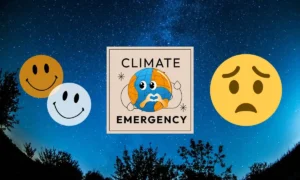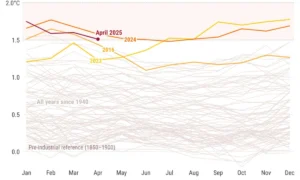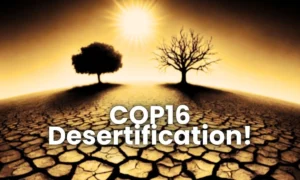41 Extra Days of Deadly Heat in 2024: ‘When Risks Become Reality’

Human-caused climate change added an average of 41 dangerous heat days globally in 2024, according to World Weather Attribution and Climate Central first annual report published this year.
The report is titled “When Risks Become Reality: Extreme Weather In 2024”.
Key Takeaways from “When Risks Become Reality: Extreme Weather in 2024”
2024 is certain to be the hottest year on record. 2023 was the hottest year on record but the global mean temperature of the world for the year 2024 went even higher.
Warmer temperatures resulted in deadly heatwaves, destructive floods and storms, more intense and longer droughts, as well as more downpour in certain areas.
The latest report highlights the consequences of the climate crisis faced by the world today. It calls for better policy, commitment, action and collaborative efforts from all the stakeholder in fighting and adapting to the changing climate dynamics.
Here are the key events from the study for the year 2024, in brief:
Record-breaking Disasters: 2024 saw deadly heatwaves, floods, droughts, and storms fueled by climate change. These events killed thousands and displaced millions. The reports states that “climate change contributed to the deaths of at least 3,700 people and the displacement of millions in 26 weather events we studied in 2024.”
Global Heat Surge: Climate change added 41 dangerous heat days globally, with small islands and developing nations hit hardest as per the analysis by Climate Central.
Flooding Crisis: 15 of 16 major floods studied were intensified by climate change.
El Niño Impact: El Niño, the natural phenomenon which spreads warmer water across the surface, releasing more heat and creating warmer, wetter air, reportedly influenced early 2024 extreme weather events, but this latest report show climate change played the major role overall in 2024’s rise in global temperatures as well as intensifying the impacts of weather events worldwide.
Historic Drought in the Amazon: Severe droughts and wildfires highly impacted the Amazon rainforest and Pantanal Wetland. The historic drought in the Amazon severely effected the rich biodiversity and climate stability of the region.
Storms: Warmer oceans intensified storms like Hurricane Helene and Typhoon Gaemi, causing stronger winds and heavier rains. Climate change intensified winds and rainfall in most Atlantic hurricanes analyzed from 2019–2023 by Climate Central research team.
Rapidly transition to renewable energy, enhance early warning systems, report heatwave risks in real time, and increase financial support for vulnerable nations to mitigate climate impacts are the key recommendations from the report by the World Weather Attribution and Climate Central.






